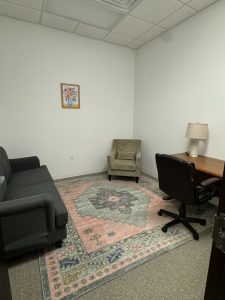Orthotics and Equipment Assessment for Kids: Supporting Mobility and Participation in Daily Activities
At Carolina Therapy Connection, we understand how important it is for children to actively participate in daily activities, whether playing with friends, engaging in classroom activities, or exploring the world around them. For children who may have difficulty with mobility or need assistance to maintain proper alignment, orthotics, and equipment can make all the difference in their ability to move and thrive. Our skilled physical therapists are here to assess the need for these special tools, helping children achieve their goals and independence.
What Are Orthotics and Equipment?
Orthotics are custom-made braces designed to support or correct joint alignment. For children, these devices can support weak or injured limbs, improve walking patterns, help with mobility, and promote progress towards functional goals. Equipment, on the other hand, may include specialized seating systems, walkers, or other assistive devices that help children participate in activities of daily living.
Why Are Orthotics and Equipment Important?
Orthotics and assistive equipment are essential for children with physical challenges as they help with:
- Joint and Trunk Alignment: Children who struggle with maintaining proper posture or alignment may benefit from orthotics that correct these issues and allow them to sit or stand more comfortably and safely.
- Mobility: Devices like braces or walkers can support movement and increase a child’s ability to move independently, improving their confidence and participation in everyday activities.
- Physical Therapy Goals: Specialized orthotics and equipment can be part of a comprehensive physical therapy plan to help children achieve their physical therapy goals, such as walking, running, or sitting for extended periods.
What to Expect During an Assessment
When you bring your child in for an orthotics and equipment assessment, our experienced physical therapists will work closely with you and your child to understand their needs. We’ll assess the child’s current level of mobility, any physical challenges they are facing, and overall physical development. Based on this assessment, we’ll determine the appropriate equipment or bracing to meet your child’s specific needs.
We also recommend local vendors who can provide custom orthotics and equipment, including options like Turtlebracing. Turtlebracing is an innovative system that uses re-modifiable material to create braces tailored to a child’s unique needs for both upper and lower extremities.
What Is Turtlebracing?
Turtlebracing is a cutting-edge bracing system that uses flexible materials to create comfortable and adaptable braces. These braces can be adjusted as a child’s needs change, providing continued support as they grow. Turtlebracing is an excellent option for children requiring a custom approach to their orthotics or equipment. Our therapists are trained to remold and fit these braces in-house.
How Carolina Therapy Connection Can Help
At Carolina Therapy Connection, we are dedicated to helping children achieve their mobility and physical therapy goals through orthotics and specialized equipment. Our physical therapists will work with you to assess your child’s needs and offer solutions that support their development, independence, and active participation in daily life. In addition to providing in-house solutions like Turtlebracing, we can connect you with trusted local vendors to find the right equipment for your child. If you want to learn more about orthotics and specialized equipment and how we incorporate this approach into therapy, including intensives, don’t hesitate to contact us to schedule an evaluation. You can also use this link to explore our pediatric intensive therapy services.















